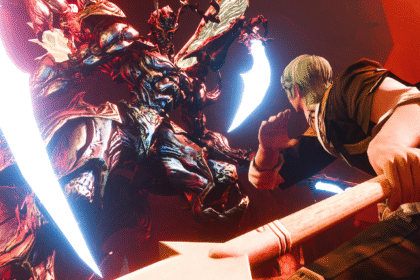I had no intention of taking Umamusume: Pretty Derby seriously. Yet here I am, deeply invested in all of these goddamn anime horse girls. I’ve only fallen deeper in the trenches since discovering that they’re all based on real life racehorses, with Cygames putting a staggering amount of effort into incorporating each one’s real-world mannerisms into their anime counterparts.
Now a good chunk of these horses have long galloped off this mortal coil, but a handful are actually still alive—like Haru Urara, famous for having never won in her 113-race career, and Gold Ship with all his eccentric mannerisms that have been faithfully recreated in both the game and the anime adaptation.
As Umamusume’s popularity continues to climb—the Steam version has pulled in around 50,000 concurrents over the last couple days—it’s also seen a surprising spike in people’s interest in actual racehorses. Presumably, that also comes with the caveat of people not actually knowing how to behave around them, which has led to Cygames releasing a whole info page on proper stable etiquette.
“It is thanks to the cooperation of racehorse owners and their respective stables that we’re able to share their stories in Umamusume: Pretty Derby,” Cygames writes in its initial notice. I can imagine the developer is pretty keen to keep those relationships in good standing, but it sounds like some folk have already been causing issues.
“In the past, there have been instances of visitors neglecting stable rules, trespassing, and photographing/filming without the stable’s consent,” the guidelines post reads. “It is important to remember that these stables are where real living horses are born, raised, and spend their later years, and that the personnel on-site are working hard day after day to care for them.”
As Cygames points out, horses are incredibly sensitive creatures both physically and emotionally, writing: “Even what seems like a small change to a person could be a shocking, scary, or stressful event to them.” It also mentions that things like irregular schedules and unexpected visits can cause a lot of disruption and stress to them, and causing problems makes stables far less likely to take on visitors.
It follows on with several pointers both for communicating with stables and how to behave when visiting them. The guidelines are, understandably, specifically targeted towards Japanese stables and racehorses, but I can only assume that the advice is pretty universal.
I actually think it’s kind of cool to see such a goofy concept spark interest in a real-life sport I’ve come to mostly associate with old men, and I do sincerely hope that folk are a little more careful about how they choose to act around the very real (very delicate) horses that have inspired or are part of the lineage that their favourite anime girl comes from. Personally I’ll be keeping out of the real-world stables—those umas aren’t going to go through their millionth speed training session without my help.
Read the full article here










